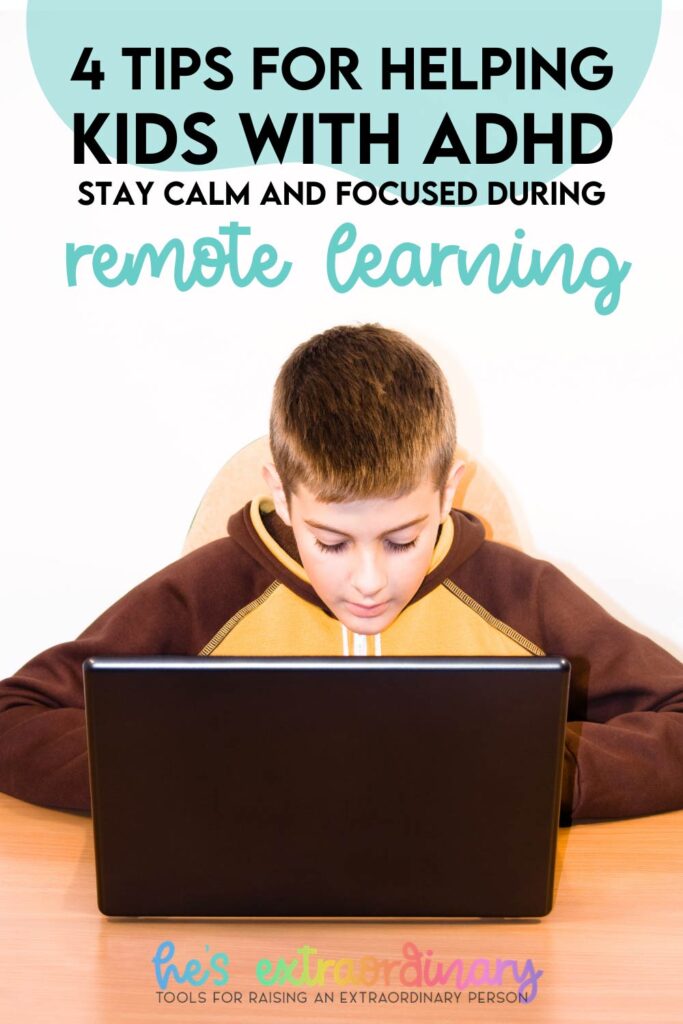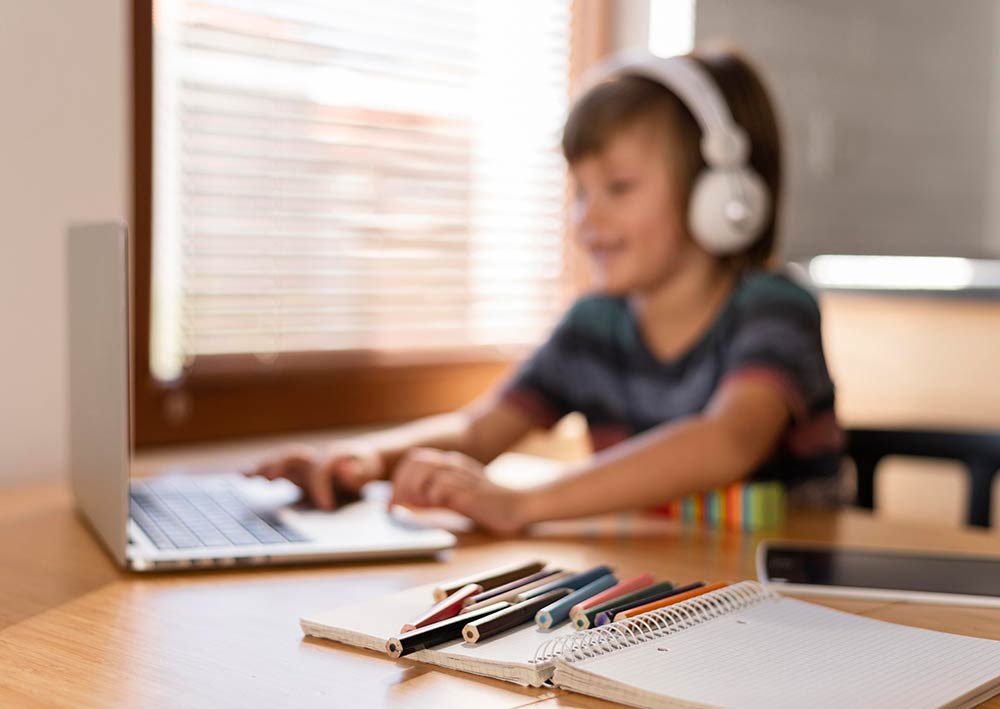Tips to Help Kids With ADHD Stay Calm & Focused During Remote Learning
What’s inside this article: 4 effective and easy-to-implement tips to help children with ADHD focus and stay calm during remote learning.
Disclaimer: this post contains affiliate links.
Many families across the U.S are returning to an online or remote learning modal due to the surge of COVID-19 cases from the omicron variant.
Distance education has prompted unique challenges for all children, but some of the most impacted students are those with ADHD. For them, staying calm and focused is more challenging than ever.
Initially, we thought remoted learning would be easier. We thought there would be fewer distractions; it would be quieter, and we’d be at home where the kids are most comfortable.
Wrong.
What we actually encountered was a slew of new distractions; some were practically irresistible. Even the most focused students would have a hard time resisting giving their dog a belly rub.
And what if you have multiple children learning at home, in different grades? Or perhaps younger children at home who want to play, watch TV, and require constant attention and supervision.
It’s a recipe for disaster for many homes. But children with ADHD are falling behind at a disproportionate rate.
You’ll find some basic tips for successful online learning for everyone here. The following tips are more specifically tailored to children with ADHD struggling with remote learning during the pandemic:
Control What You Can Control
If you’re struggling with remote learning, you need to identify which factors are within your control and which are not.
You can’t control…
- Your child’s neurotype. As in, their brain. You can’t take away ADHD. You can’t alter the way they learn or interpret and respond to the world around them, as it relates to how their brain works.
- Your child’s enthusiasm for remote learning. Although it would be nice if we could (and we can certainly set the right tone and encourage positive thinking ), we can’t control anyone else’s attitude towards anything except our own.
- How the teacher educates the class. Everyone has been adapting and finding new ways to do things. Distance education was unchartered territory for many teachers. You may disagree with the teacher’s style, but you can’t control how they teach their class.
You CAN control…
- The environment your child learns in. They’re at home, so you have full control over the setup for their home learning station so you can fully optimize this.
- Nutrition. Our brains function best when they’re fueled with the right nutrition. Making sure your child’s nutritional needs are met will help them work at their full potential.
- Physical Activity. There are many cognitive benefits of exercise, including improved self-regulation, focus, and better learning.
Ways to Help Your Child Stay Calm & Focused During Remote Learning
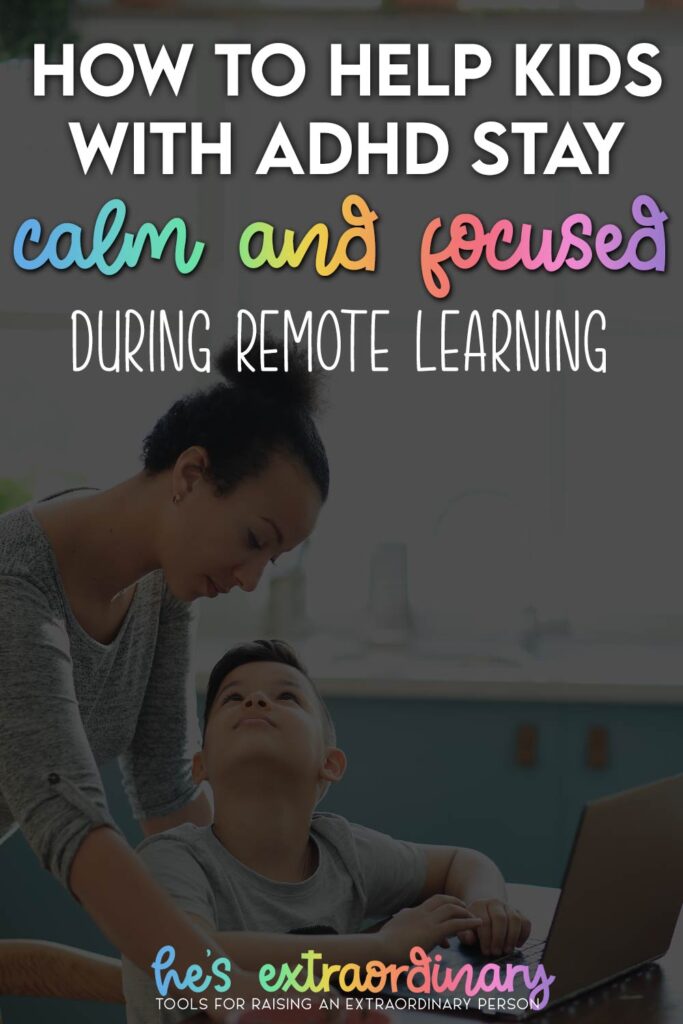
Here are a few tips you can begin implementing immediately that will improve the distance learning experience for everyone.
1. Create an Ideal Workstation
The TEACHH Framework is a framework used in schools across that country, designed to help students who struggle to follow adult-led routines find success.
Part of this philosophy involves creating an independent workstation that provides structure and limits distractions while promoting organization skills.
An ideal workstation will:
- Have everything labeled
- Include visual supports if needed
- Work will flow left-to-right
- A clearly defined place to put completed work.
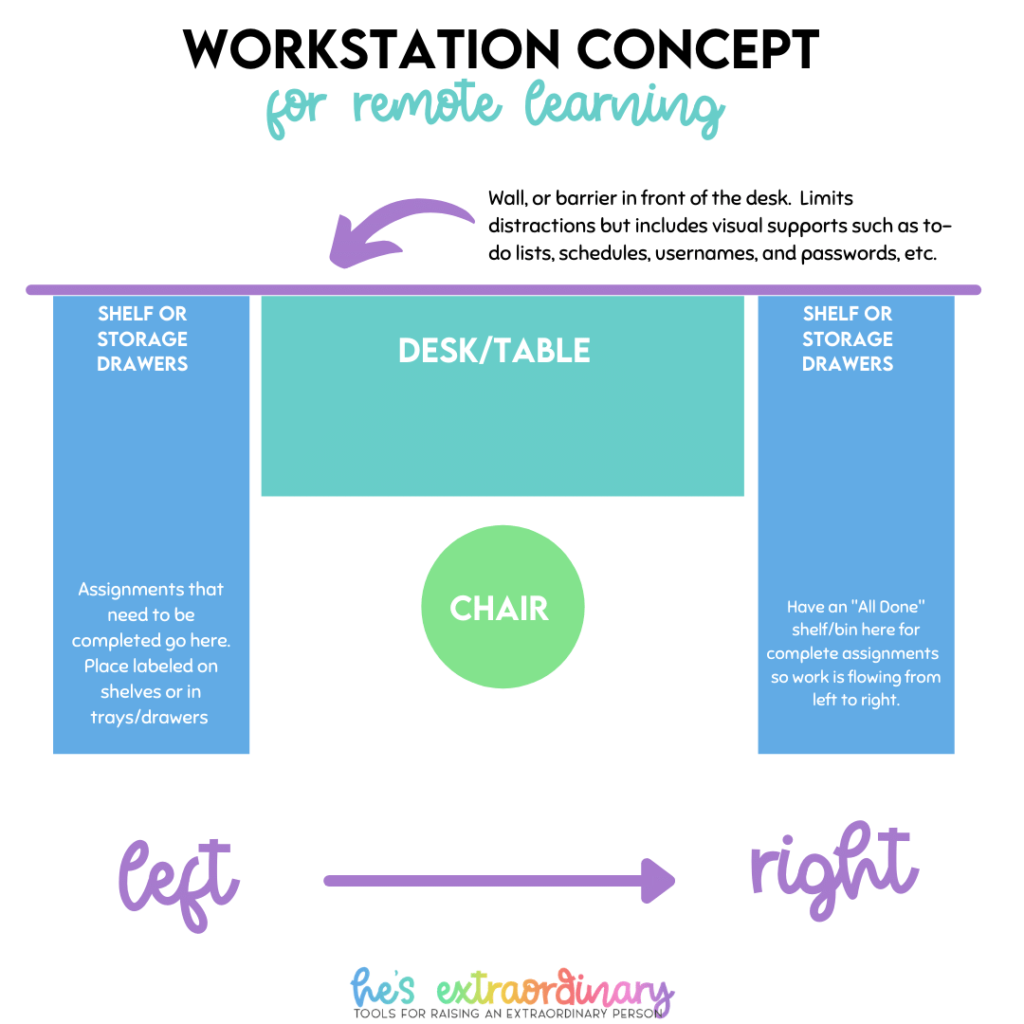
All of the supplies your child needs for the day should be at the desk and labeled. They shouldn’t need to leave their workstation to retrieve supplies during learning time.
By the way, their chair doesn’t actually need to be a chair. Your child may focus better while using alternative seating, such as an exercise ball.
2. Give Your Child A Daily Magnesium Supplement
Almost everyone (approx. 72% of the population) is deficient in magnesium, and taking a daily magnesium supplement can improve remote learning in a couple of different ways.
Signs of magnesium deficiency include:
- Restlessness
- Hyperactivity
- Noise sensitivity
- Irritability
- Meltdowns
- Aggressiveness
Correcting a magnesium deficiency can help your child stay calmer and focused during learning.
Magnesium Improves Sleep
Magnesium regulates the hormone melatonin, which guides sleep-wake cycles in your body.
75% of kids with ADHD experience disordered sleep. And, not getting enough sleep significantly impacts learning, behavior, attention span, and mental health.
Using magnesium to help your child sleep better is another way this supplement can improve learning.
Magnesium Helps Self-Regulation
Magnesium helps self-regulation by activating the parasympathetic nervous system; this is responsible for getting you calm and relaxed.
Being able to stay calm and regulated is also going to help your child learn.
You can read about magnesium for self-regulation in detail here.
Studies also show magnesium improves concentration and boosts brain function, along with aiding the absorption of other nutrients.
Best Magnesium Supplement for Kids
The best magnesium supplement for children is ChildCalm from Advanced Nutrition by Zahler.
This supplement also contains B6, which is necessary for the body to absorb magnesium. Plus, it has other natural ingredients that are believed to improve self-regulation: saffron, L-theanine, and lemon balm extract.
ChildCalm magnesium supplements use a superior form of magnesium over other supplements.
Where to Buy
Zahler ChildCalm supplements are available on Amazon and on the Advanced Nutrition by Zahler website.
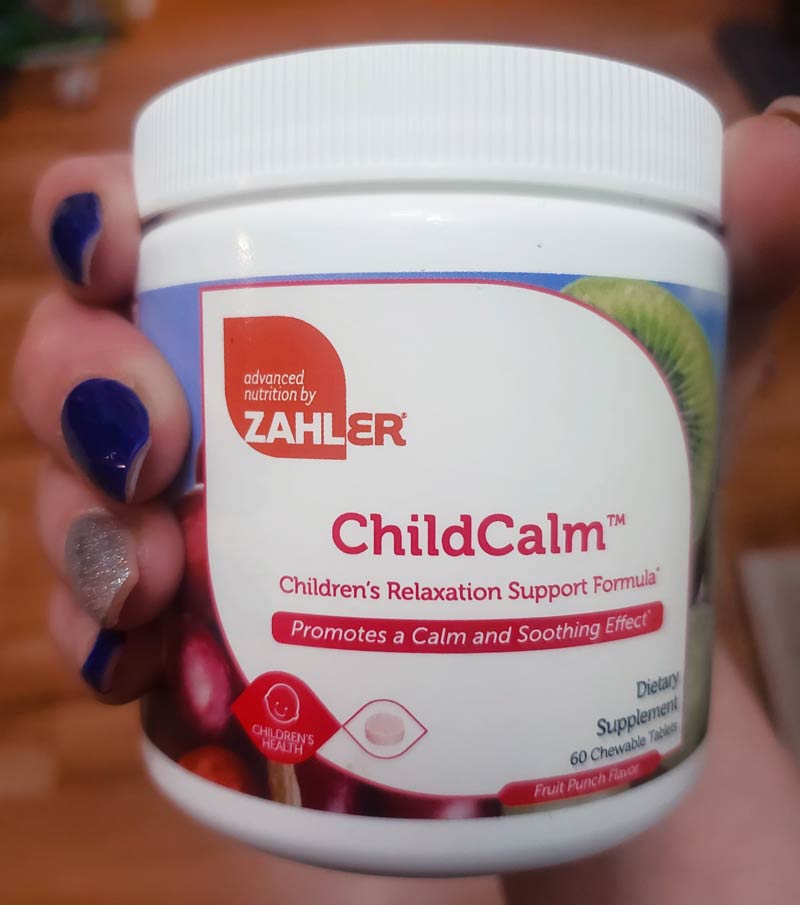
3. Provide Regular Brain Breaks Throughout The Day
Brain breaks are short (3 to 5 minute) mental breaks designed to help kids stay focused and attentive in the classroom or help during transition times.
They not only increase focus but also support self-regulation and learning in the classroom or at home.
The best times for brain breaks are in between subjects, after recess and lunch before resuming classwork, when your child shows signs of frustration and needs a break, and intermittently during times when they’re expected to sustain focus.
You can download 20 printable brain break activity cards here.
4. Workout in the Morning
Working out in the morning, even for less than 10 minutes, can improve attention, focus, and overall learning.
There are physical benefits to exercise, of course, but it’s the cognitive benefits of exercise that make it worthwhile to add a workout to your child’s morning routine.
- Improves self-regulation
- Reduces hyperactivity and fidgeting (especially in children with ADHD or ASD)
- Improves focus
- Decreases anxiety & boosts mood
- Better learning
Here are a few fun workouts to try with your kids:
Bottom Line:
If your child is having a hard time focusing and staying regulated during remote learning, you can help them by modifying the things that are within your control.
Modifying the work environment, giving a daily magnesium supplement, providing morning exercise, and offering frequent brain breaks, are all ways to help your child stay calm and focused.
If your child is struggling, you should accommodate them. In school, children’s needs are accommodated so they can be successful. If you need to provide an alternate environment for your child to work in, or modify assignments, speak to their teacher and provide your child with what they need.
Looking for accommodation ideas? Check out these 50 ideas.
